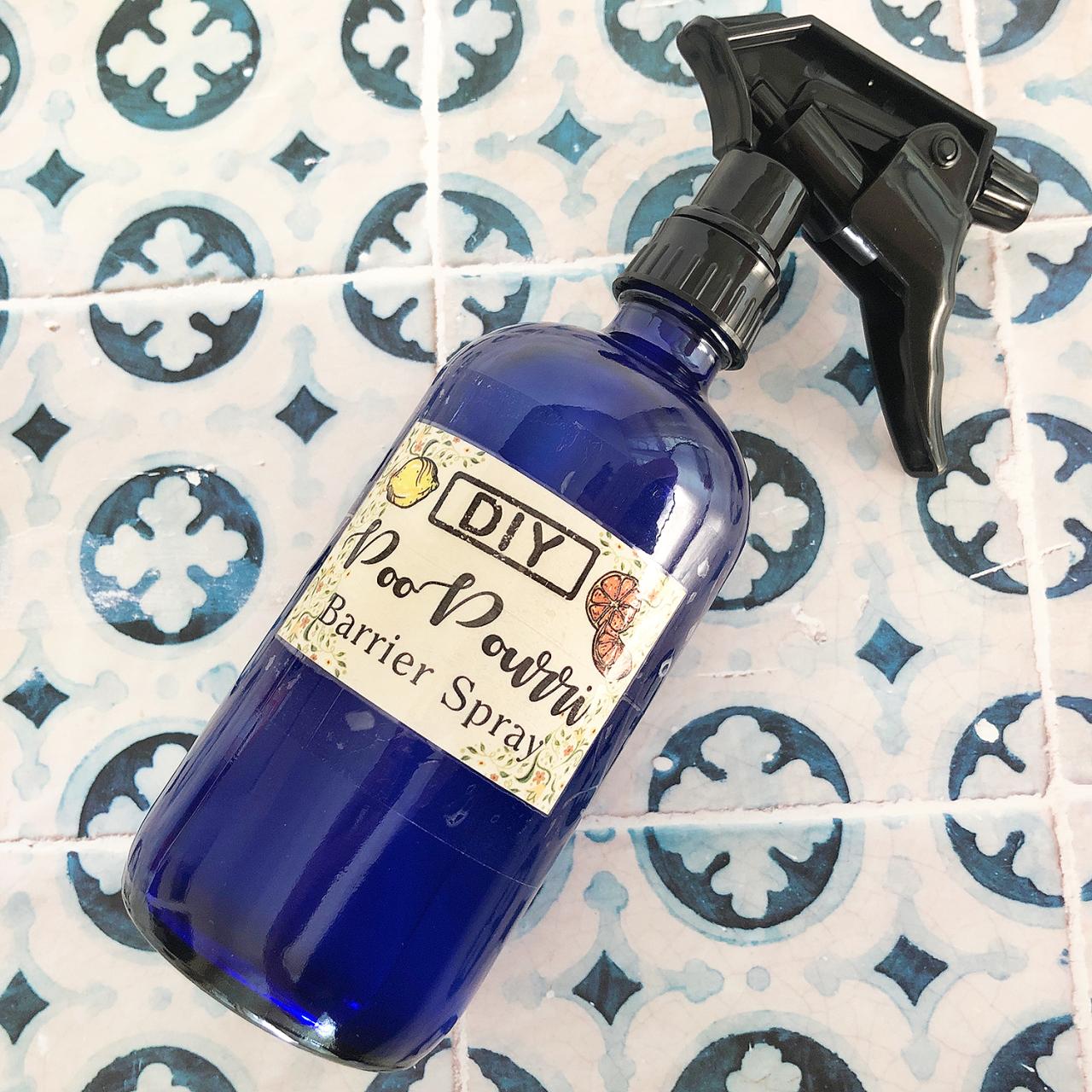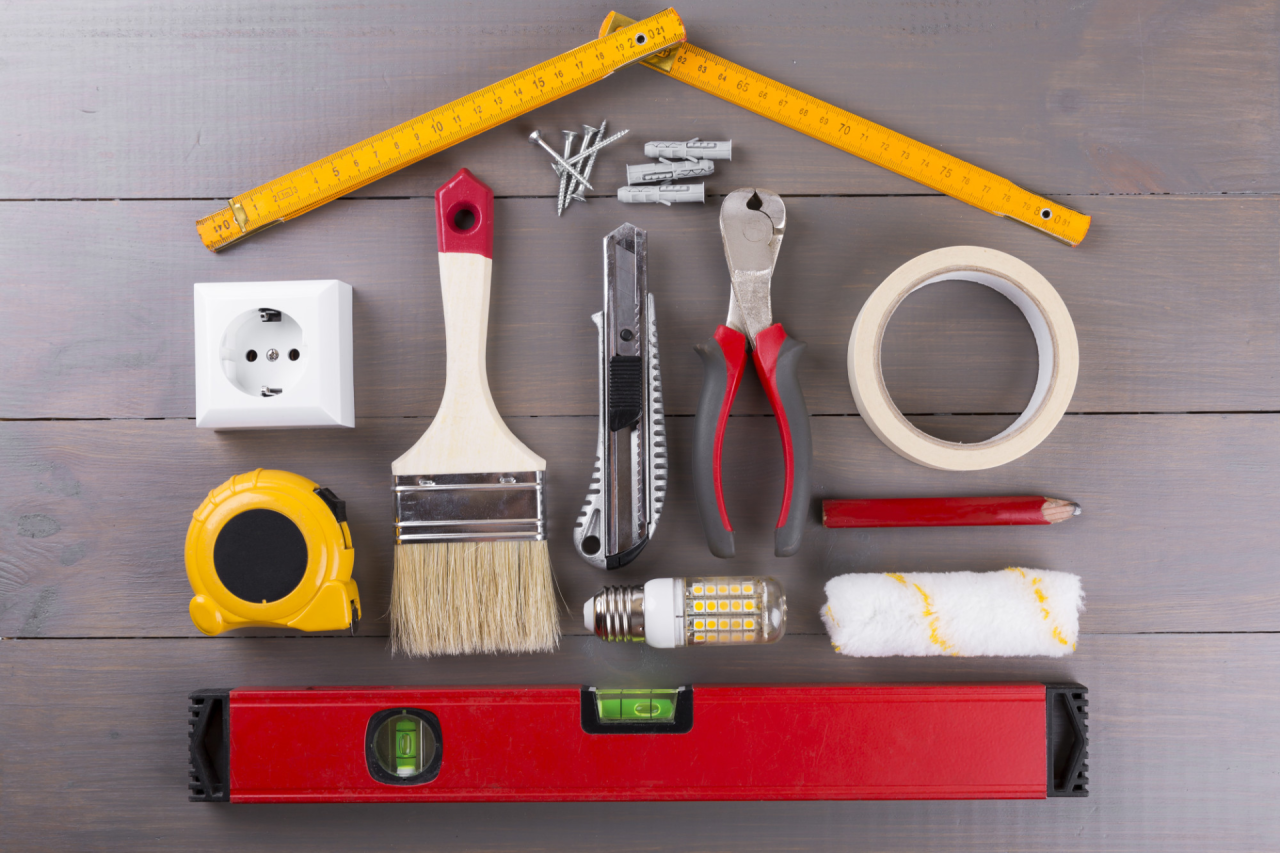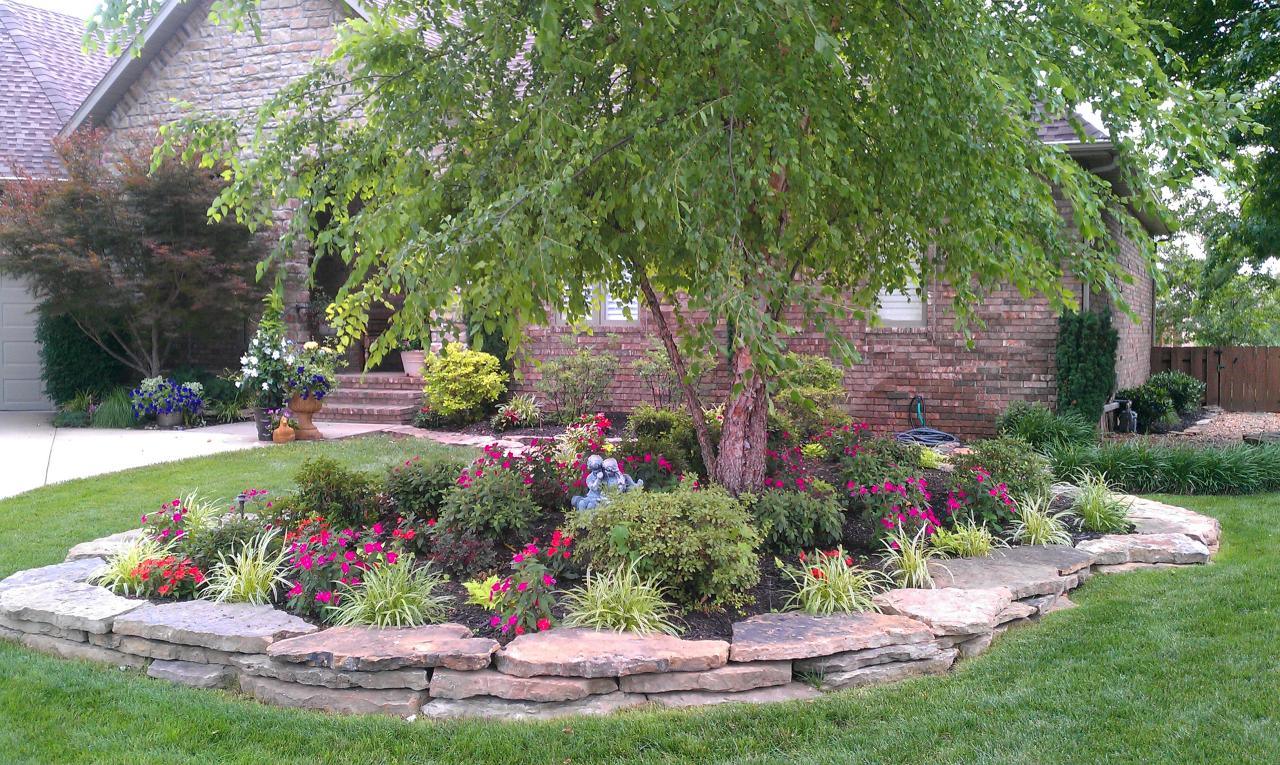DIY landscaping ideas offer a fantastic way to enhance your outdoor space, transforming it into a beautiful and inviting oasis. From adding vibrant flowers and lush greenery to creating charming walkways and serene water features, the possibilities are endless. With a little planning and effort, you can create a landscape that reflects your personal style and enhances the overall appeal of your home.
This guide provides a comprehensive overview of DIY landscaping, covering everything from initial design concepts to the essential tools and techniques for successful execution. We’ll explore the various aspects of landscaping, including soil preparation, plant selection, hardscaping, water features, lighting, and irrigation, while emphasizing sustainable practices to create a thriving and environmentally friendly landscape.
Designing Your Landscape
Creating a beautiful and functional landscape starts with a well-thought-out design plan. This plan acts as your blueprint, guiding you through the process of transforming your outdoor space.
Site Analysis
Before you start dreaming up your dream landscape, it’s essential to understand the existing conditions of your site. This involves taking a close look at your property’s characteristics, including:
- Sunlight Exposure: Knowing how much sunlight different areas of your yard receive throughout the day is crucial for choosing the right plants. This can be determined by observing the amount of sunlight hitting your yard at different times of the day and considering the presence of any structures or trees that might cast shade.
- Soil Type: The type of soil you have will influence the types of plants that will thrive in your landscape. You can test your soil using a home soil test kit or have it professionally analyzed. This will give you information about its pH level, nutrient content, and drainage properties.
- Water Availability: Access to water is essential for plant growth. Consider the location of your water source, the availability of irrigation systems, and any restrictions on water usage in your area.
- Slope and Topography: The slope and topography of your land will influence how water drains and how you design your landscape. Steep slopes may require special considerations for erosion control and plant selection.
- Existing Features: Take inventory of any existing features, such as trees, shrubs, fences, or patios. These features can be incorporated into your design or may need to be adjusted or removed.
Defining Your Goals
Once you have a good understanding of your site, it’s time to define your goals for your landscape. What do you want to achieve with your design?
- Functionality: Do you want to create a space for entertaining, relaxing, gardening, or playing?
- Aesthetics: What kind of style are you looking for? Do you prefer a formal or informal look? Do you want to incorporate specific colors, textures, or themes?
- Sustainability: Are you interested in creating a water-wise or low-maintenance landscape?
- Budget: Set a realistic budget for your landscaping project. This will help you narrow down your options and make informed decisions about materials and plants.
Choosing Plants
With your site analysis and goals in mind, you can start selecting plants that will thrive in your specific conditions and complement your desired aesthetic.
- Consider Plant Needs: Choose plants that are adapted to your climate, soil type, and sunlight exposure. Research the specific needs of each plant, including its water requirements, mature size, and growth habit.
- Variety and Texture: Incorporate a variety of plants with different sizes, shapes, colors, and textures to create visual interest. This will help to create a dynamic and inviting landscape.
- Local Native Plants: Native plants are well-suited to your local climate and soil conditions, often requiring less water and maintenance than non-native species. They also support local wildlife and ecosystems.
- Seasonal Interest: Consider plants that offer interest throughout the year, with blooms, foliage changes, or interesting seed heads.
Incorporating Design Elements
Beyond plants, you can enhance your landscape with a variety of design elements.
- Hardscaping: Hardscaping refers to the non-living elements of your landscape, such as patios, walkways, retaining walls, and fire pits. These elements can define spaces, provide structure, and add visual interest.
- Water Features: Water features, such as ponds, fountains, and waterfalls, can add a calming and soothing element to your landscape. They can also attract wildlife and create a sense of tranquility.
- Lighting: Lighting can transform your landscape, creating ambiance and extending the usability of your outdoor space. Consider using a variety of lighting techniques, such as path lighting, accent lighting, and mood lighting.
Soil Preparation and Planting
A well-prepared soil is the foundation for a thriving landscape. Before you start planting, it’s crucial to assess your soil’s condition and make any necessary adjustments. This ensures your plants have the optimal environment to flourish.
Soil Testing
Soil testing provides valuable insights into your soil’s composition and nutrient levels. It helps you determine the necessary amendments to achieve the ideal growing conditions for your chosen plants.
- You can obtain a soil testing kit from your local garden center or send a sample to a certified laboratory for analysis.
- The results will indicate the pH level, nutrient content, and any potential issues like compaction or drainage problems.
Soil Amendment
Based on the soil test results, you can amend your soil to create a balanced environment for your plants.
- If your soil is acidic, you can add lime to raise the pH level.
- For alkaline soil, adding sulfur or peat moss can lower the pH.
- To improve drainage, incorporate sand or compost.
- Adding organic matter, such as compost or manure, enhances soil structure, improves water retention, and provides essential nutrients.
Tilling
Tilling is a process that loosens the soil, making it easier for roots to penetrate and for water and nutrients to reach the plants.
- You can use a hand tiller for smaller areas or a motorized tiller for larger spaces.
- Avoid over-tilling, as it can damage soil structure and expose beneficial microorganisms.
- Tilling should be done before planting to ensure the soil is properly prepared.
Plant Selection
Choosing the right plants for your location is crucial for their long-term success.
- Consider the amount of sunlight your planting area receives, as different plants have varying sunlight requirements.
- Take into account the soil type and its drainage properties.
- Choose plants that are well-suited to your climate and growing zone.
- Consider the mature size of the plants to ensure they have enough space to grow.
Planting
Planting your chosen plants correctly is essential for their establishment and growth.
- Dig a hole that is twice as wide and as deep as the root ball of the plant.
- Gently loosen the roots of the plant before placing it in the hole.
- Backfill the hole with soil, ensuring the plant is planted at the same depth as it was in the pot.
- Water the plant thoroughly after planting to help settle the soil and encourage root growth.
Watering
Proper watering is vital for the health and survival of your plants.
- Water deeply and infrequently, allowing the soil to dry out slightly between waterings.
- Avoid overwatering, as it can lead to root rot.
- Use a watering can or hose with a sprinkler attachment to ensure even watering.
- Mulch around the base of the plants to help retain moisture and suppress weeds.
Fertilization
Fertilizing provides your plants with the nutrients they need to thrive.
- Choose a fertilizer that is specifically formulated for the type of plants you are growing.
- Follow the instructions on the fertilizer label for application rates and frequency.
- Avoid over-fertilizing, as it can damage plants.
- Apply fertilizer in the spring and summer, when plants are actively growing.
Hardscaping Elements
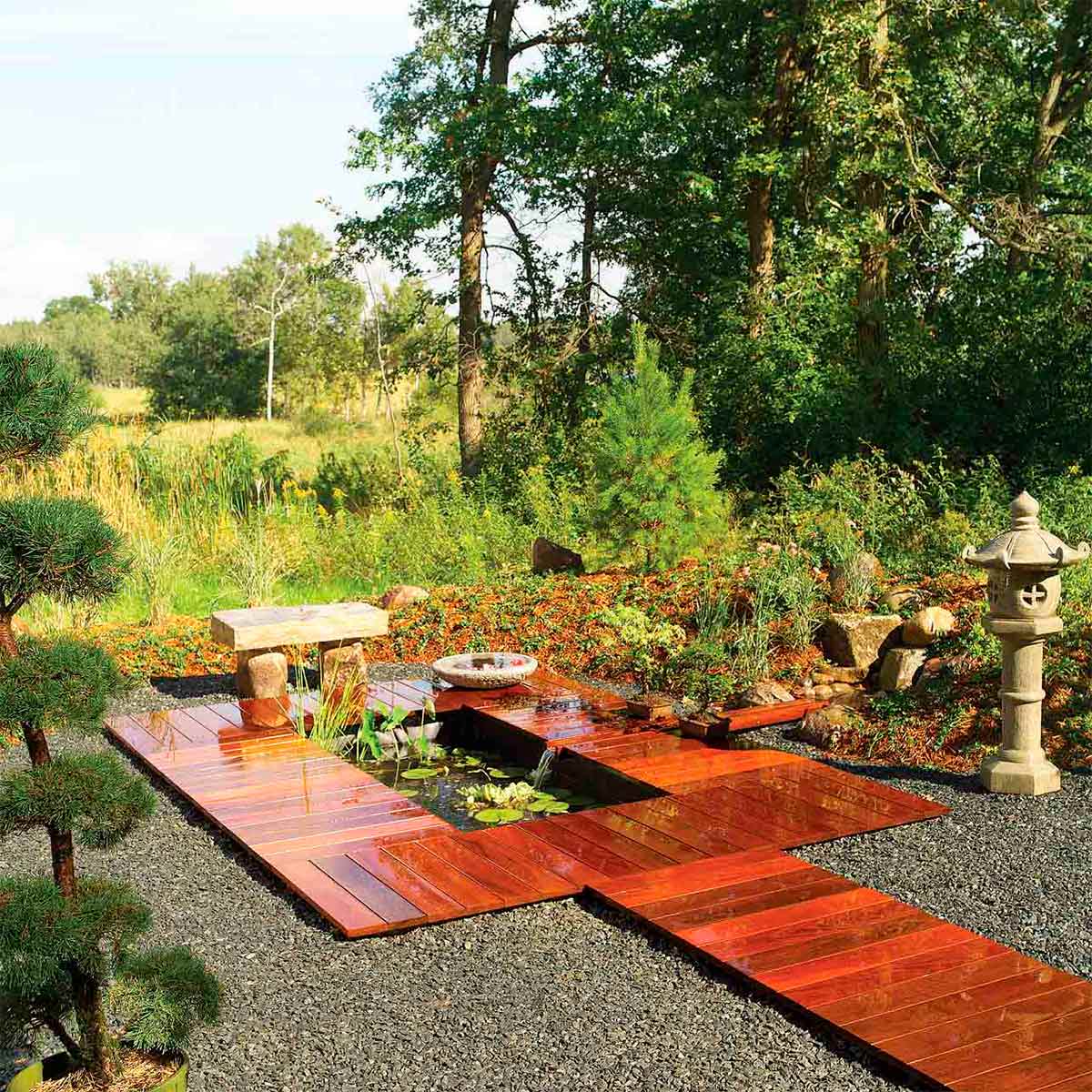
Hardscaping elements are the non-living components of your landscape design, adding structure, functionality, and visual appeal. These elements can transform your outdoor space into a functional and aesthetically pleasing haven.
Patios
Patios are a popular hardscaping feature, providing an extended living area for relaxation, dining, or entertaining. They can be constructed from various materials, each with its own unique aesthetic and durability.
- Concrete: Concrete is a versatile and affordable option, offering durability and a wide range of finishes. It can be stained, stamped, or textured to create a variety of looks.
- Pavers: Pavers are individual stones or blocks that can be arranged in various patterns, offering a more natural look than concrete. They come in a wide range of materials, including brick, stone, and concrete.
- Natural Stone: Natural stone, such as flagstone or slate, offers a rustic and elegant look. It is a durable and long-lasting option but can be more expensive than other materials.
- Timber: Timber decking can add warmth and a natural feel to your patio. It is a popular choice for its aesthetic appeal and durability, but it requires regular maintenance.
When selecting materials for your patio, consider factors such as your budget, desired aesthetic, and the climate in your region. For example, in areas with heavy rainfall, a material that is slip-resistant and water-resistant is essential.
Walkways
Walkways connect different areas of your landscape, providing a safe and aesthetically pleasing path for foot traffic. They can be designed to complement the overall design of your property and enhance its visual appeal.
- Straight Walkways: Straight walkways offer a clean and modern look and are best suited for smaller yards or for creating a sense of formality.
- Curved Walkways: Curved walkways add a sense of whimsy and natural flow to your landscape, creating a more inviting and relaxed atmosphere.
- Stepping Stones: Stepping stones create a rustic and informal look, perfect for gardens or pathways through natural areas. They can be made from various materials, including stone, concrete, or even recycled materials.
When designing walkways, consider the following:
- Width: Walkways should be wide enough to accommodate comfortable foot traffic, typically 3-4 feet wide.
- Slope: Walkways should have a slight slope to prevent water from pooling and to ensure proper drainage.
- Materials: Consider the materials’ durability, maintenance requirements, and aesthetic appeal.
Retaining Walls
Retaining walls are essential for managing slopes and creating level areas in your landscape. They can also be used to create terraces, add visual interest, and enhance the overall design of your property.
- Concrete Retaining Walls: Concrete retaining walls are durable and cost-effective, offering a wide range of design options.
- Stone Retaining Walls: Stone retaining walls provide a natural and rustic look, blending seamlessly with the surrounding landscape. They can be constructed using various types of stone, such as flagstone, granite, or sandstone.
- Timber Retaining Walls: Timber retaining walls offer a warm and natural aesthetic, blending well with wooden decks or fences. They are a popular choice for their eco-friendliness and natural beauty.
When constructing a retaining wall, consider the following:
- Soil Conditions: The soil type and drainage will influence the design and construction of your retaining wall.
- Wall Height: The height of the wall will determine the materials needed and the complexity of the construction process.
- Drainage: Adequate drainage is crucial to prevent water pressure from building up behind the wall and causing damage.
Water Features
Adding water features to your landscape can transform it into a serene and captivating oasis. These elements bring a sense of tranquility, attract wildlife, and enhance the overall aesthetics of your outdoor space.
Types of Water Features
Water features come in various forms, each offering unique benefits and design possibilities.
- Ponds: Ponds are a popular choice for creating a natural and inviting water feature. They can range in size from small, decorative ponds to larger, more elaborate designs. Ponds provide a habitat for fish, frogs, and other aquatic life, adding a touch of nature to your landscape.
- Fountains: Fountains add a touch of elegance and movement to your landscape. They come in a wide array of styles, from classic and traditional to modern and contemporary. Fountains create a soothing sound of flowing water, which can help to mask unwanted noise and create a calming atmosphere.
- Waterfalls: Waterfalls create a dramatic and awe-inspiring focal point in any landscape. They can be constructed in various sizes and styles, from small, cascading waterfalls to larger, more dramatic features. Waterfalls provide a natural sound of rushing water, which can add a sense of energy and excitement to your outdoor space.
Design and Construction Considerations
When designing and constructing a water feature, several important factors must be considered:
- Location: Choosing the right location for your water feature is crucial. Consider factors such as sunlight exposure, proximity to existing structures, and the overall flow of your landscape.
- Size and Shape: The size and shape of your water feature should complement the scale of your landscape. Consider the space available and the desired impact you want to create.
- Materials: A wide range of materials can be used for constructing water features, including concrete, stone, and even recycled materials. Choose materials that are durable, aesthetically pleasing, and compatible with your landscape style.
- Water Source and Filtration: You will need a reliable source of water for your water feature. Consider using a well, city water, or even rainwater collection. Filtration systems are essential for maintaining water quality and preventing algae growth.
- Safety: Safety is paramount when designing and constructing water features. Ensure that the area around the feature is safe for children and pets. Consider adding safety features such as fencing or barriers.
Maintenance and Longevity
Maintaining your water feature is essential for ensuring its longevity and beauty.
- Regular Cleaning: Regularly clean your water feature to remove debris and prevent algae growth. This may involve skimming the surface, cleaning the bottom, and changing the water periodically.
- Filter Maintenance: Regularly clean or replace filters to maintain water quality. A well-maintained filter will help prevent algae growth and keep your water feature looking its best.
- Winterization: In colder climates, winterizing your water feature is crucial. This may involve draining the water, covering the feature, or using a de-icer to prevent freezing and damage.
Lighting and Irrigation: Diy Landscaping Ideas
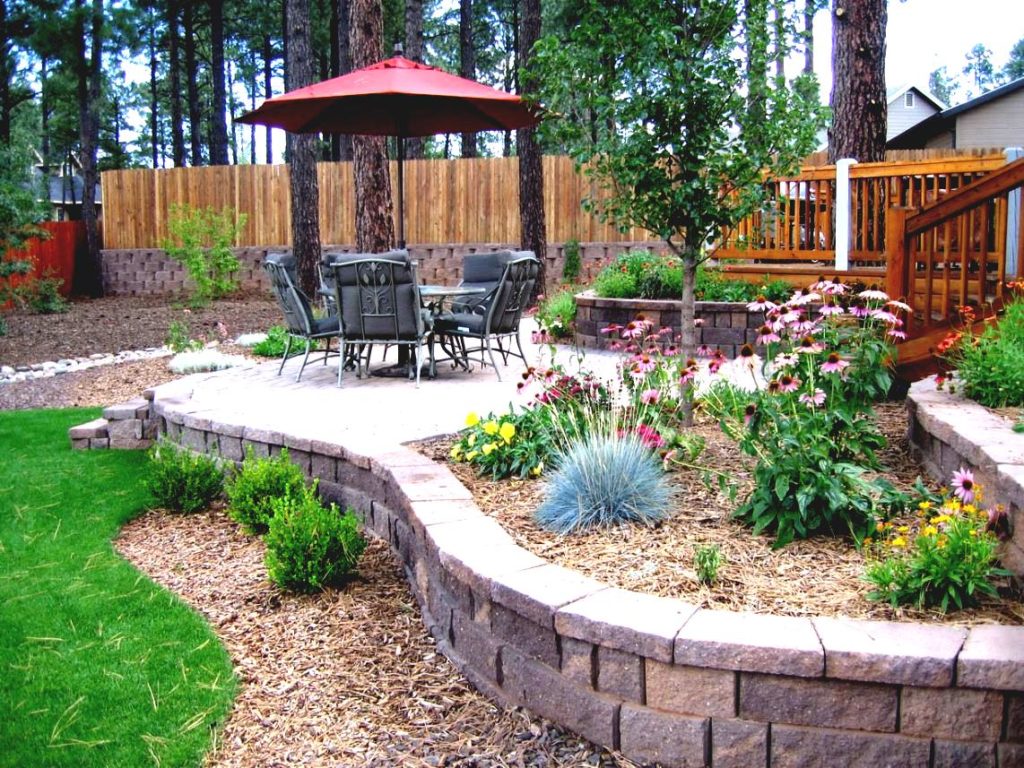
Lighting and irrigation are essential aspects of landscaping, enhancing both the aesthetics and health of your outdoor space. Proper lighting can illuminate pathways, highlight features, and extend the enjoyment of your landscape into the evening hours. An efficient irrigation system ensures that your plants receive the water they need to thrive, reducing water waste and promoting healthy growth.
Types of Landscape Lighting
Landscape lighting offers a wide range of options to suit different needs and preferences. The most common types include:
- Path Lighting: These lights are typically low-voltage and used to illuminate walkways, steps, and other areas where safety is paramount. They come in various styles, from classic lanterns to modern fixtures.
- Accent Lighting: Accent lights are used to highlight specific features, such as trees, sculptures, or water features. They can create dramatic effects and add depth to the landscape.
- Flood Lighting: Floodlights provide broad illumination, ideal for illuminating large areas, such as driveways, parking lots, or playing fields. They are typically high-intensity and can be used for security purposes.
- Uplighting: Uplighting is a technique that directs light upwards towards trees, walls, or other vertical surfaces, creating a dramatic and ethereal effect.
- Downlighting: Downlighting directs light downwards from trees or other high points, creating a soft and diffused illumination.
Installing and Maintaining Landscape Lighting
Installing landscape lighting requires careful planning and execution. It is recommended to consult with a professional electrician for complex installations, especially for hard-wired systems.
- Planning: Consider the desired effect, the placement of features, and the overall design of the landscape.
- Materials: Choose durable and weather-resistant materials, such as stainless steel or copper, for long-lasting performance.
- Installation: Use proper grounding techniques to ensure safety and prevent electrical hazards. Consider using low-voltage systems for easier installation and maintenance.
- Maintenance: Regularly clean the fixtures and bulbs to maintain optimal performance and prevent damage from dust or debris.
Designing an Effective Irrigation System
An effective irrigation system should provide adequate water to all plants while minimizing water waste.
- Assess Watering Needs: Different plants have varying water requirements, so it’s crucial to understand the specific needs of your plants.
- Choose the Right System: Consider factors such as the size of your landscape, the type of plants, and your budget. Options include sprinkler systems, drip irrigation, and soaker hoses.
- Proper Installation: Ensure that the system is properly installed and adjusted to deliver water evenly and efficiently.
- Regular Maintenance: Inspect the system regularly for leaks, clogs, or other issues. Adjust watering schedules as needed to accommodate changes in weather conditions.
Tips for Effective Irrigation
Here are some tips for designing and maintaining an effective irrigation system:
- Water Deeply and Infrequently: Encourage deep root growth by watering less frequently but deeply. This allows the roots to reach deeper into the soil, making plants more drought-tolerant.
- Mulch Your Plants: Mulch helps retain moisture in the soil, reducing the need for frequent watering.
- Use a Timer: Program a timer to automatically water your plants, ensuring consistent watering schedules.
- Consider Water Conservation: Implement water-saving techniques, such as using rain barrels, greywater systems, or drought-tolerant plants.
Sustainable Landscaping Practices
Sustainable landscaping involves creating a beautiful and functional outdoor space while minimizing its environmental impact. It focuses on using resources wisely, conserving water, reducing chemical use, and promoting biodiversity.
Benefits of Sustainable Landscaping
Sustainable landscaping offers numerous benefits, including:
- Water conservation: By using drought-tolerant plants, efficient irrigation systems, and water-wise practices, you can significantly reduce water consumption.
- Reduced chemical use: Sustainable landscaping encourages the use of natural pest control methods and organic fertilizers, minimizing the use of harmful chemicals that can pollute the environment.
- Increased biodiversity: Choosing native plants and creating habitats for wildlife can support a thriving ecosystem and attract beneficial insects and pollinators.
- Reduced pollution: Sustainable landscaping practices help reduce air and water pollution by minimizing the use of synthetic materials and chemicals.
- Cost savings: By using native plants, efficient irrigation, and natural pest control, you can reduce your long-term landscaping costs.
Choosing Native Plants
Native plants are adapted to the local climate and soil conditions, making them naturally drought-tolerant and pest-resistant. They require less water, fertilizer, and pesticides, contributing to a sustainable landscape.
- Research your region’s native plant species: Consult local nurseries, botanical gardens, or online resources to identify plants suitable for your area.
- Consider plant characteristics: Choose plants that suit your desired aesthetic, size, and growth habits.
- Check for invasive species: Avoid planting invasive species that can outcompete native plants and disrupt the local ecosystem.
Using Eco-friendly Materials
Sustainable landscaping involves using eco-friendly materials that minimize environmental impact.
- Recycled materials: Incorporate recycled materials like wood chips, shredded bark, or recycled plastic for mulch, pathways, or retaining walls.
- Compost: Use compost as a natural fertilizer and soil amendment, reducing the need for synthetic fertilizers.
- Sustainable wood: Choose sustainably harvested wood for structures, fences, and other landscaping elements.
- Locally sourced materials: Opt for materials sourced locally to reduce transportation emissions and support local businesses.
Composting and Recycling in Landscaping
Composting and recycling are essential practices in sustainable landscaping.
- Composting: Collect yard waste, food scraps, and other organic materials to create nutrient-rich compost for your garden. Compost improves soil health, reduces landfill waste, and provides a natural fertilizer.
- Recycling: Recycle landscaping materials like plastic containers, metal tools, and cardboard to minimize waste and conserve resources.
Tools and Equipment
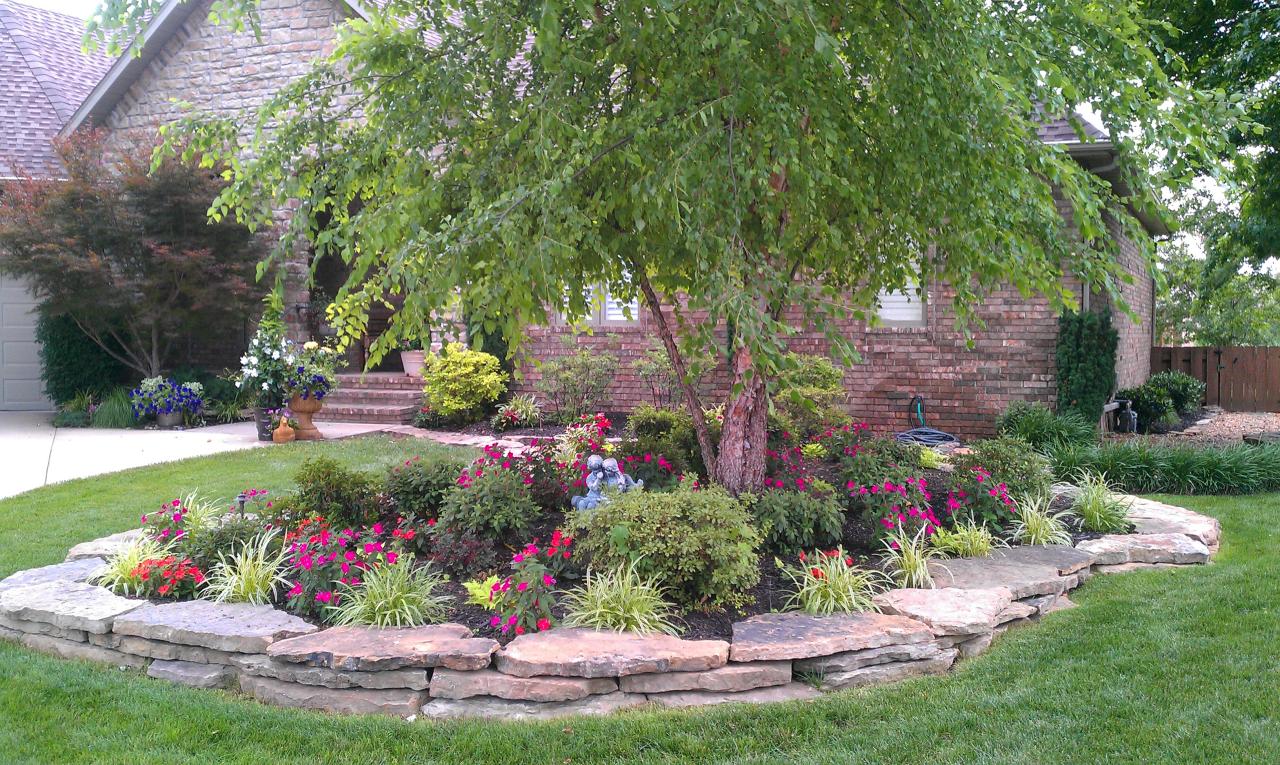
Having the right tools and equipment is crucial for successful DIY landscaping projects. They make tasks easier, faster, and safer. This section will provide a comprehensive list of essential tools and equipment, along with their purposes and tips for safe use and maintenance.
Essential Tools and Equipment, Diy landscaping ideas
It is essential to have the right tools for various landscaping tasks. The following list Artikels some of the most important tools and equipment:
- Shovel: Used for digging, moving soil, and loading materials. Choose a shovel with a comfortable grip and a strong blade. When digging, use a smooth, even motion and avoid twisting the shovel.
- Hand Trowel: A smaller version of a shovel, ideal for planting, transplanting, and weeding. Choose a trowel with a comfortable handle and a sharp blade.
- Rake: Used for gathering leaves, debris, and leveling soil. Choose a rake with a comfortable grip and a sturdy head.
- Garden Hoe: Used for weeding, cultivating soil, and creating furrows. Choose a hoe with a comfortable handle and a sharp blade.
- Hand Pruners: Used for trimming branches, pruning shrubs, and cutting flowers. Choose pruners with sharp blades and a comfortable grip.
- Loppers: Used for pruning larger branches and cutting through thick stems. Choose loppers with sharp blades and a comfortable grip.
- Wheelbarrow: Used for transporting soil, mulch, and other materials. Choose a wheelbarrow with a sturdy frame and a comfortable handle.
- Measuring Tape: Used for measuring distances and laying out landscape features. Choose a measuring tape with a clear display and a durable casing.
- Level: Used to ensure that surfaces are level and that structures are plumb. Choose a level with a clear bubble and a durable frame.
- Garden Hose: Used for watering plants and cleaning tools. Choose a garden hose with a durable construction and a comfortable nozzle.
- Watering Can: Used for watering small plants and seedlings. Choose a watering can with a comfortable handle and a spout that provides a gentle flow of water.
Safety Tips for Using Landscaping Tools
It is crucial to prioritize safety when using landscaping tools.
- Wear appropriate safety gear, such as gloves, eye protection, and sturdy footwear.
- Use tools for their intended purpose and avoid using them for tasks they are not designed for.
- Keep tools sharp and in good working order to prevent accidents and ensure efficient use.
- Store tools properly to prevent damage and accidents.
- Be aware of your surroundings and avoid working near electrical lines or other hazards.
- Take breaks to avoid fatigue and prevent accidents.
Maintenance Tips for Landscaping Tools
- Clean tools after each use to prevent rust and corrosion.
- Sharpen blades regularly to ensure efficient use and prevent accidents.
- Lubricate moving parts to prevent wear and tear.
- Store tools in a dry, well-ventilated area to prevent rust and damage.
Maintenance and Care
A well-maintained landscape thrives, showcasing its beauty and resilience. Regular care is crucial for a healthy and flourishing outdoor space, ensuring its longevity and aesthetic appeal.
Pruning
Pruning involves removing dead, diseased, or overgrown branches and stems to promote healthy growth and maintain the desired shape of plants. It is a vital practice for enhancing plant health and aesthetic appeal.
- Timing: The optimal time for pruning varies depending on the plant species. Deciduous trees and shrubs are typically pruned during their dormant season, while evergreen trees are best pruned in late winter or early spring.
- Tools: Sharp pruning shears, loppers, and saws are essential tools for pruning.
- Techniques: Different pruning techniques are used for various plant types. For example, heading back involves cutting back branches to a bud or node, while thinning involves removing entire branches to improve air circulation and light penetration.
Weeding
Weeding is the removal of unwanted plants, known as weeds, from your landscape. These plants compete with desirable plants for resources such as sunlight, water, and nutrients.
- Hand-pulling: This method is effective for small weeds and shallow-rooted plants.
- Cultivating: Using a hoe or cultivator to loosen the soil and remove weeds is effective for larger areas.
- Mulching: Applying a layer of mulch around plants helps suppress weed growth by blocking sunlight and preventing weed seeds from germinating.
Fertilizing
Fertilizing provides essential nutrients to plants, supporting their growth and overall health.
- Types of fertilizers: Fertilizers come in various forms, including granular, liquid, and slow-release.
- Application: Fertilizers can be applied directly to the soil or through a sprinkler system.
- Timing: The optimal time for fertilizing depends on the plant species and the climate. Most plants benefit from fertilization in spring and fall.
Identifying and Addressing Common Landscaping Problems
Recognizing and addressing landscaping problems promptly is crucial for maintaining a healthy and vibrant outdoor space.
- Pests: Identifying and controlling pests such as insects, rodents, and diseases is essential for protecting your plants.
- Diseases: Fungal diseases, bacterial infections, and viral diseases can affect plant health.
- Environmental factors: Factors such as drought, excessive rainfall, and poor soil drainage can impact plant growth.
Final Thoughts
Embarking on a DIY landscaping project can be a rewarding experience, allowing you to express your creativity and create a personalized outdoor haven. By following the steps Artikeld in this guide, you can transform your yard into a beautiful and functional space that you’ll enjoy for years to come. Remember, the key to success lies in careful planning, choosing the right plants and materials, and paying attention to detail. With dedication and a bit of know-how, you can create a landscape that reflects your unique vision and enhances the beauty of your home.
DIY landscaping can be a fun and rewarding way to transform your outdoor space. Adding a vertical element, like a pallet wall ideas , can create a unique focal point and add visual interest. You can use the pallet wall to display climbing plants, create a living wall, or even build a small garden feature.

